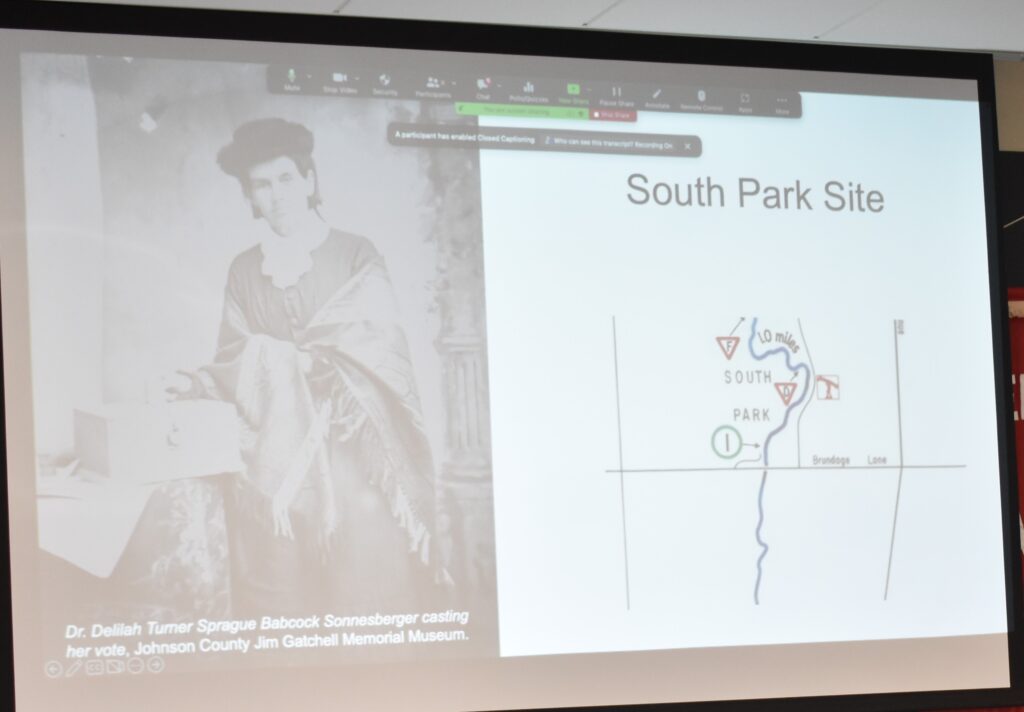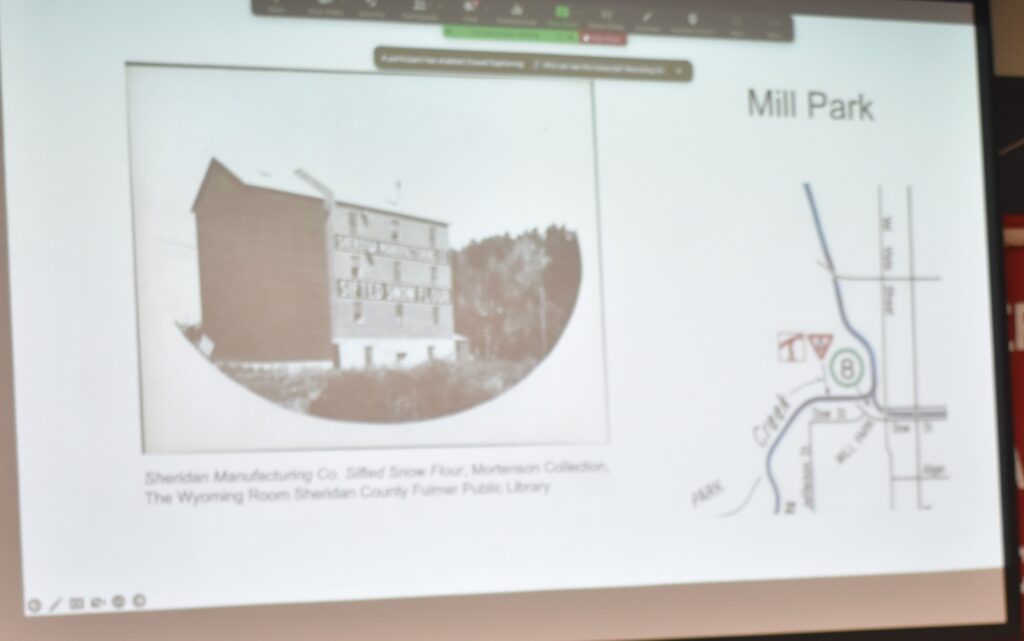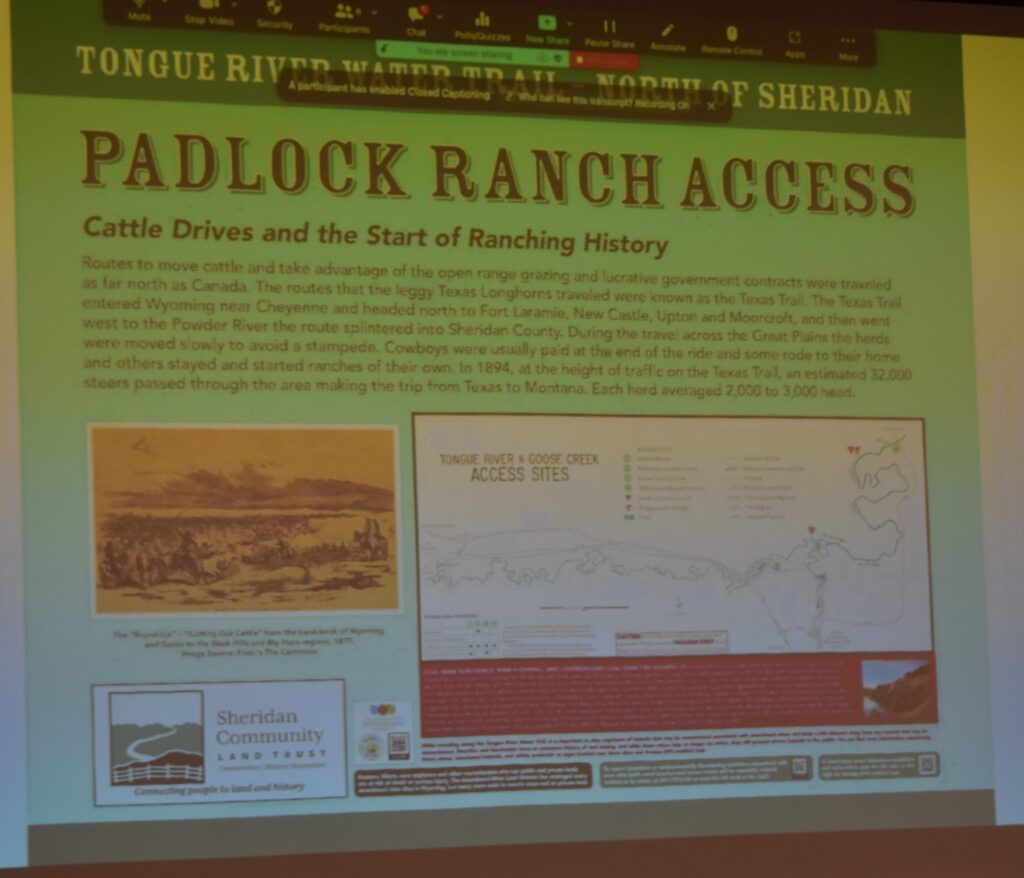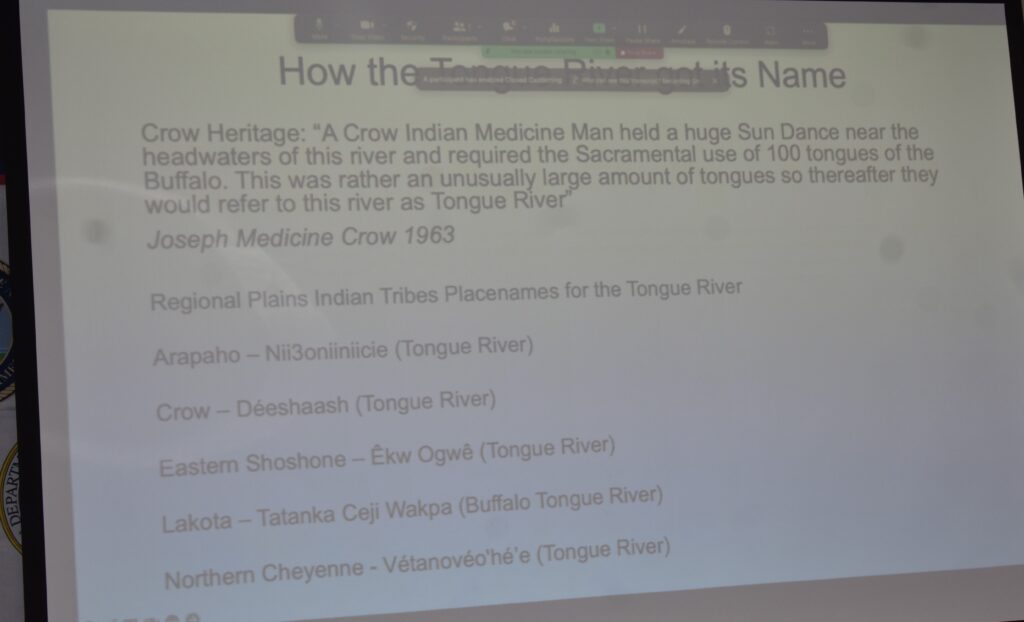News
SCLT History Program Features History Along the Water Trails

The Sheridan Community Land Trust Explore History at The Hub titled History Along the Tongue River Water Trail was held on Tuesday, Jan. 10 at The Hub on Smith Street.
SCLT Historical Program Manager, Carrie Edinger, gave a virtual tour of the Big and Little Goose Creeks and the Tongue River as essential natural resources for early inhabitants and into the settlement era. She talked about the trail and said the project,

One of the early pioneers that was important to the area was Dr. Delilah Sonnesberger, the first woman to cast a ballot in Johnson County. She was a physician and owned a great deal of property in Sheridan.
Illustrated with photographs and maps, Edinger mentioned several historic facts about each site on the trail. She talked about the Sheridan Manufacturing Company flour mill, that was once located across from what is now known Crook’s Fountain on Dow Street.

Another access area was near the old site of KN Gardens, owned by four Japanese who raised vegetables from 1906 to 1919. There are access points to the creek at Kendrick Park, West Works Street, NB Avenue, and Dana Avenue.
Edinger showed a photo of one new sign, with images related to the history of the site, as well as any hazards that might be encountered for paddlers along the water ways, such as barbed wire fences and drop structures.

Edinger also talked about the Tongue River and Goose Creek and that one of the access points was on the Padlock Ranch. She talked about the ranching culture and mentioned the Texas Trail, that through Wyoming from Cheyenne to Fort Laramie, north to Moorcroft and all along the Powder River. At its height in 1894 it was estimated that 32,000 longhorn steers were driven from Texas to Montana. Each herd averaged from 2-3,000 head of beeves.
One of the sites is at the Kleenburn Recreation area near Ranchester. Edinger had this to say about that area.
She also talked about how the town and mine got that name.
As most of the creeks in the area retain the Native American names, Edinger also talked about how Tongue River got its name from the local Indian tribes.

The Explore History programs offer open conversation for community members to share their memories or historical information about these sites and events. The Explore History program is generously funded by the Next50 Initiative

